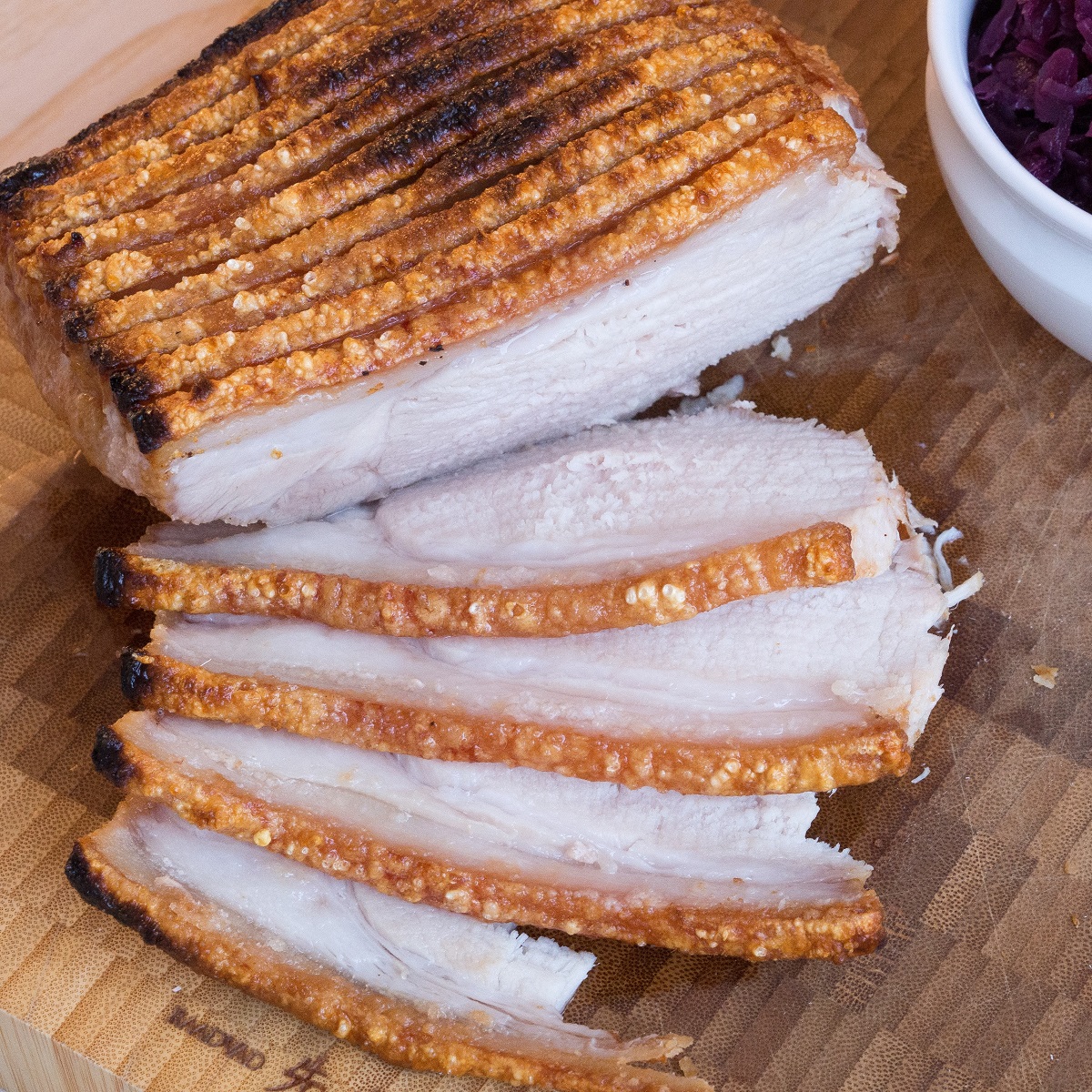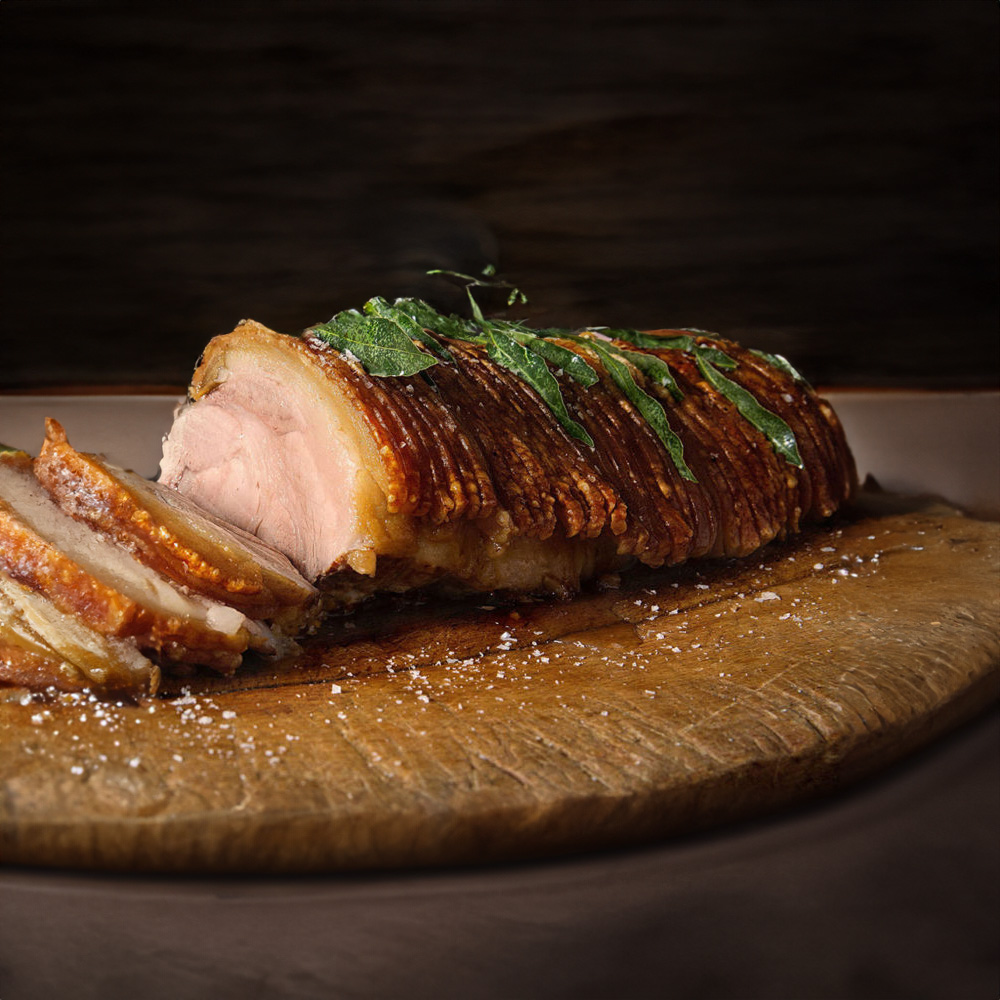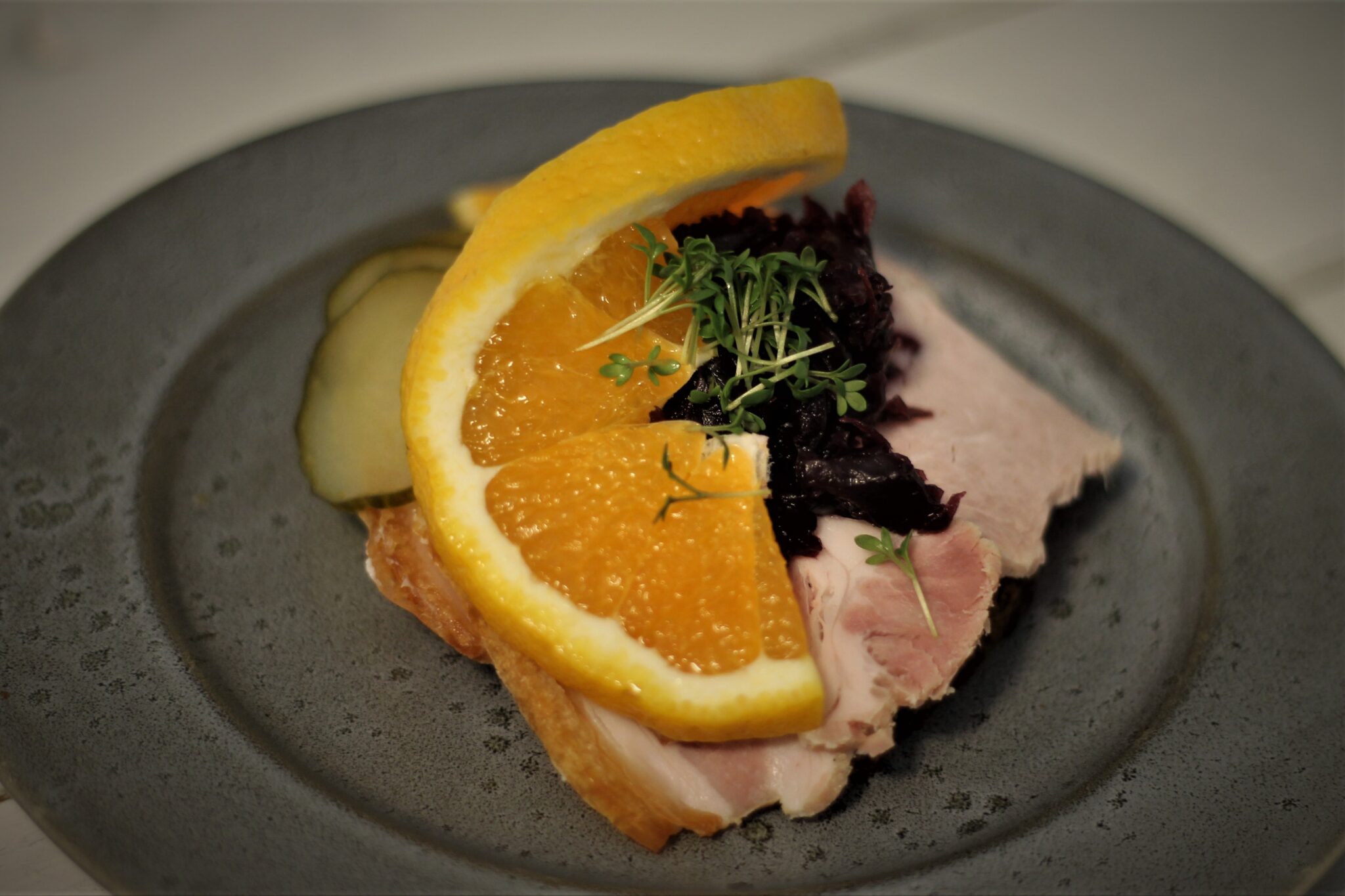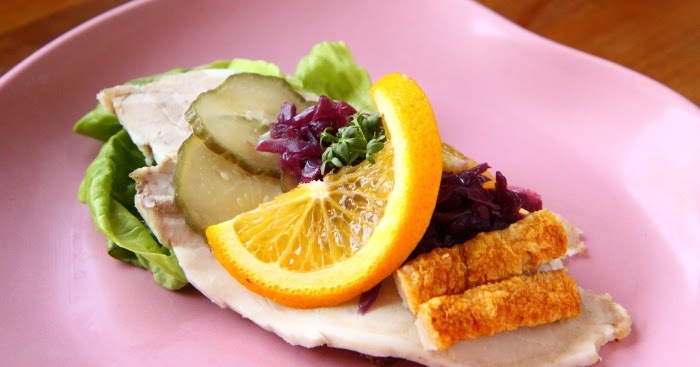Flæskesteg
ribbensteg, smørrebrød med flæskesteg
Flæskesteg , the Danish version of roast pork, is considered to be one of Denmark's principal national dishes. Always prepared with crackling, it is also a favourite for the Danish Christmas dinner served as the evening meal on 24 December or Christmas Eve. Pork has been a Danish favourite for centuries but it was after the Industrial Revolution in the 1860s when wood-fired ovens were introduced for use in the home that, in addition to sausages and hams, roast pork became a popular dish. From the beginning, joints were always cooked together with the rind in order to provide crackling. Ever since, this has remained a prerequisite for the dish.
Source: Wikipedia





